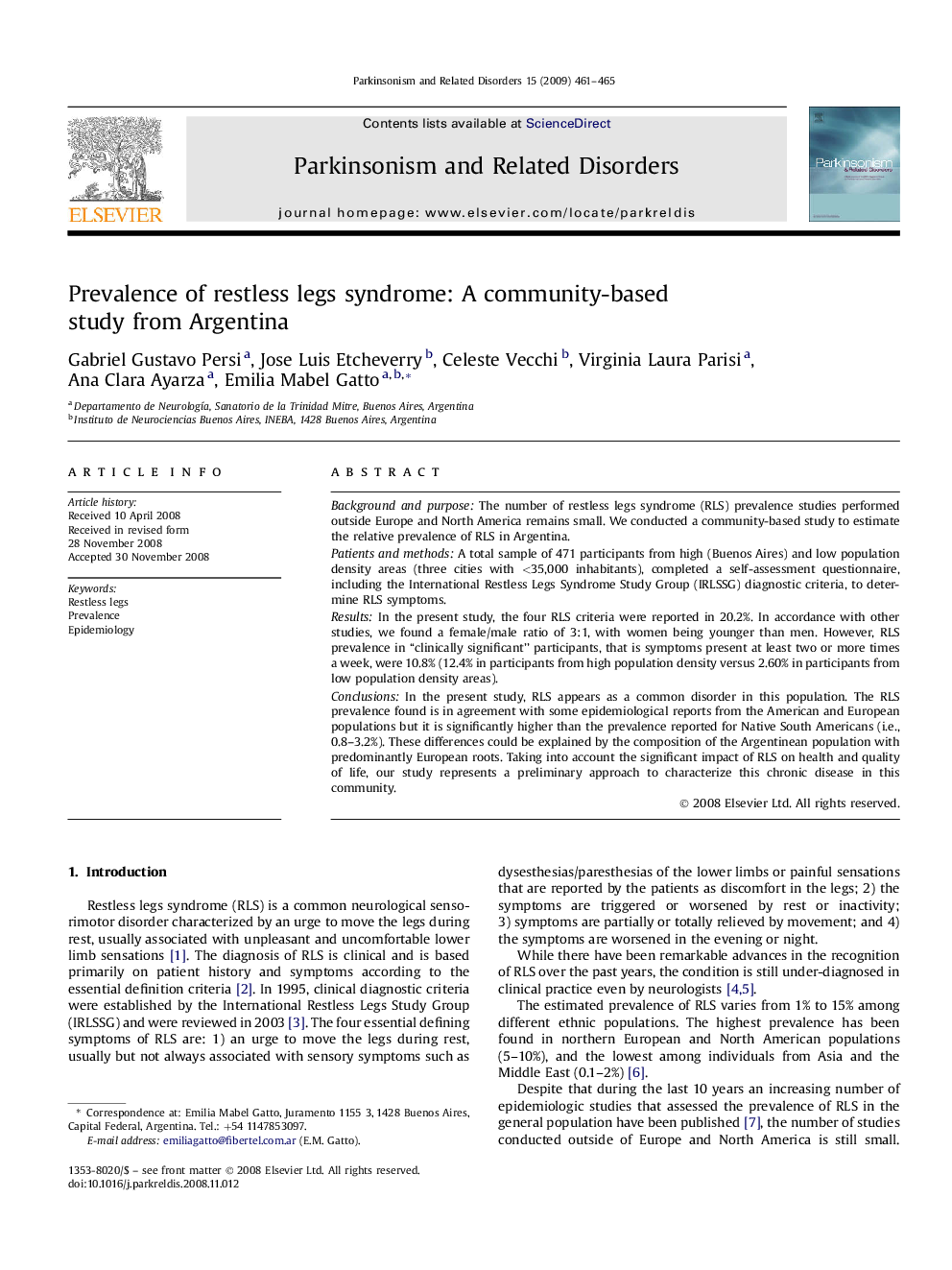| Article ID | Journal | Published Year | Pages | File Type |
|---|---|---|---|---|
| 1921444 | Parkinsonism & Related Disorders | 2009 | 5 Pages |
Background and purposeThe number of restless legs syndrome (RLS) prevalence studies performed outside Europe and North America remains small. We conducted a community-based study to estimate the relative prevalence of RLS in Argentina.Patients and methodsA total sample of 471 participants from high (Buenos Aires) and low population density areas (three cities with <35,000 inhabitants), completed a self-assessment questionnaire, including the International Restless Legs Syndrome Study Group (IRLSSG) diagnostic criteria, to determine RLS symptoms.ResultsIn the present study, the four RLS criteria were reported in 20.2%. In accordance with other studies, we found a female/male ratio of 3:1, with women being younger than men. However, RLS prevalence in “clinically significant” participants, that is symptoms present at least two or more times a week, were 10.8% (12.4% in participants from high population density versus 2.60% in participants from low population density areas).ConclusionsIn the present study, RLS appears as a common disorder in this population. The RLS prevalence found is in agreement with some epidemiological reports from the American and European populations but it is significantly higher than the prevalence reported for Native South Americans (i.e., 0.8–3.2%). These differences could be explained by the composition of the Argentinean population with predominantly European roots. Taking into account the significant impact of RLS on health and quality of life, our study represents a preliminary approach to characterize this chronic disease in this community.
